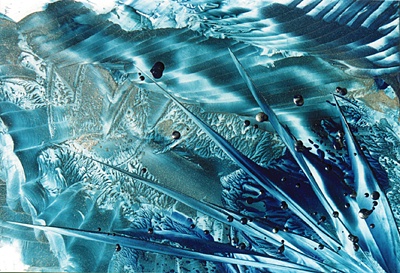All Nonfiction
- Bullying
- Books
- Academic
- Author Interviews
- Celebrity interviews
- College Articles
- College Essays
- Educator of the Year
- Heroes
- Interviews
- Memoir
- Personal Experience
- Sports
- Travel & Culture
All Opinions
- Bullying
- Current Events / Politics
- Discrimination
- Drugs / Alcohol / Smoking
- Entertainment / Celebrities
- Environment
- Love / Relationships
- Movies / Music / TV
- Pop Culture / Trends
- School / College
- Social Issues / Civics
- Spirituality / Religion
- Sports / Hobbies
All Hot Topics
- Bullying
- Community Service
- Environment
- Health
- Letters to the Editor
- Pride & Prejudice
- What Matters
- Back
Summer Guide
- Program Links
- Program Reviews
- Back
College Guide
- College Links
- College Reviews
- College Essays
- College Articles
- Back
Surface Tension Explained With Experiment Test
Surface tension is a property of matter that results from intermolecular forces (A Dictionary of Biology). The molecules are enhanced of the intermolecular attractive forces at the surface of a liquid (Hyper Physics). This means that the molecules at the top of the liquid are attracted by that below it, and the molecules inside the liquid undergo a force of attraction from the other molecules around it from all sides equally that make them bond together. You could also say that surface tension is caused by coherent forces acting on the molecules making them “stick” together (Hyper Physics). The temperature of the liquid you're dealing with can have an effect on its surface tension. For cleaning things,people often use hot water because for one, it is an expendable resource oftentimes always at hand, and for another, when heated (although they may not know it) it has less surface tension and thus won’t form bubbles over pores that need to be cleaned and rather go inside of it, cleaning the material at hand.Water bugs can walk on water because their mass isn’t great enough to penetrate the water’s surface tension. So, if somethings mass is less than the liquids surface tension, it will be able to walk on it without falling through. A needle on water is another example of this. You may not think that surface tension hasanything to do with disinfectants spray but guess what? It does! Disinfectants are made of liquids with low surface tension so that they spread out around pathogens cell walls to disrupt its life, rather than form bubbles on it to fall off. Surface tension causes some liquids to form spherical drops, like beads of water. (Holt, Science and Technology Physical Science) Surface tension varies on different liquids. For example gasoline has a very low surface tension and forms flat drops. (Holt, Science and Technology Physical Science)One of the highest surface tensions in a liquid lies with ethanol. The being of hydrogen bonding in ethanol gives ethanol the greatest intermolecular forces and also a higher surface tension than most.
For my science project concerning surface tension, I am going to test and see how different types of liquid matter in relation to the amount of drops of that liquid that can fit on a quarter. For my types of liquids, I am going to use vinegar, bleach, oil, and water. I am going to use the same quarter for all the liquids, and an eye dropper to drop bits of liquid on to the quarter. I will record the amount of drops that can fit on the quarter for each liquid three times total, and calculate the average of it. I will stop dropping drops of the liquid on to the quarter when the surface tension has too much mass accumulated onto the surface of the quarter and break. I predict that water will have the highest surface tension because it has hydrogen it, like ethanol. This test will conclude my hypothesis and hopefully answer my question about how different types of liquids compare with each other in relation to their surface tension on a quarter.

Similar Articles
JOIN THE DISCUSSION
This article has 1 comment.